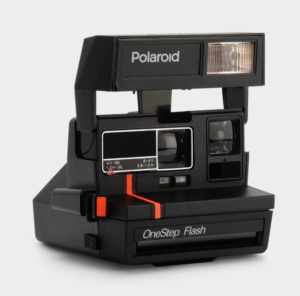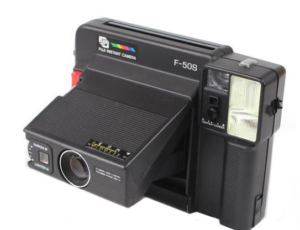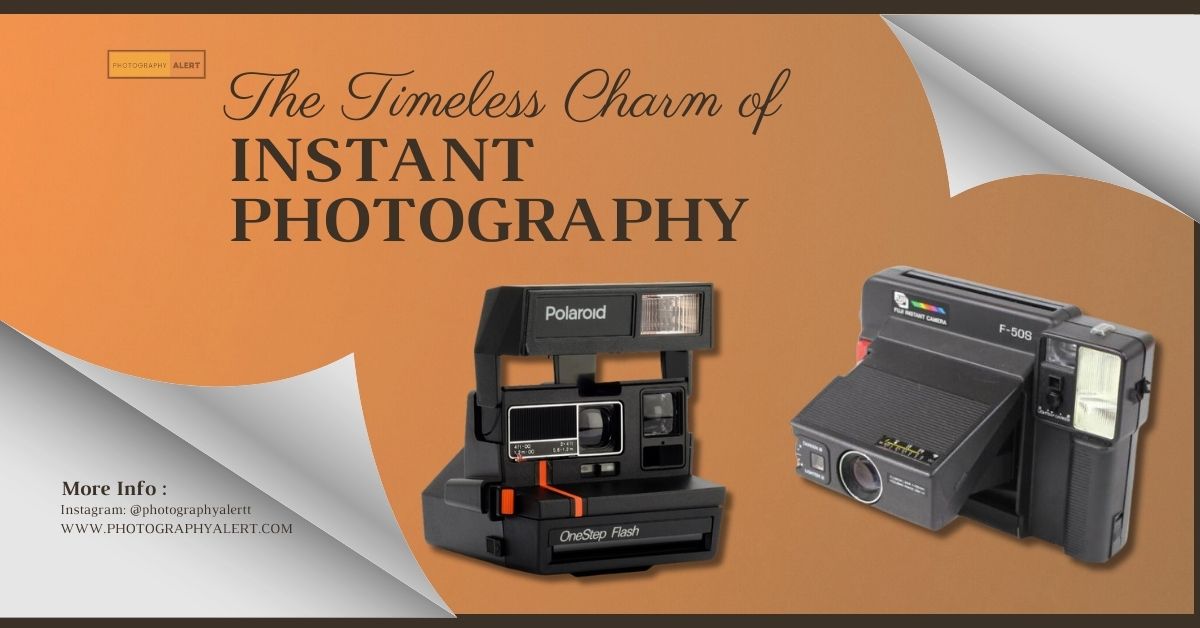Introduction to Instant Photography
Instant photography is a fascinating method of capturing and developing photos almost immediately after taking them. Unlike traditional photography, where the film must be processed in a darkroom or sent off to a lab, instant photography delivers a physical print after pressing the shutter button. This technology has endured decades of changes in the photographic world, offering a unique and tangible way to capture memories.
A Brief History of Instant Photography
The Birth of Polaroid
The conception of instant photography was revolutionized by EdwinH. Land, the author of Polaroid Corporation, in the late 1940s. Land’s alleviation came from his son, who questioned why she could not incontinently see the print he’d just taken. This led to the development of the first instant camera, the Polaroid Land Camera, introduced in 1948. This camera used a chemical process to develop prints inside the camera within twinkles.

Evolution and Popularity
Polaroid cameras continued to innovate throughout the 1950s and 60s, introducing color instant film and more user-friendly camera models. The Polaroid SX-70, launched in 1972, became a cultural icon with its foldable design and integral film pack, simplifying the process of taking instant photos. This era marked the height of instant photography’s popularity and also made it a staple in households and a beloved tool for amateur and professional photographers.
Fujifilm’s Entry
In the 1980s and 90s, Fujifilm entered the instant photography market, providing an alternative to Polaroid. Fujifilm’s Instax series, introduced in 1998, became popular for its vibrant colors and reliability. Unlike Polaroid, which faced financial difficulties and eventual bankruptcy in the early 2000s, Fujifilm continued to thrive, steadily gaining a foothold in the market.

The Resurgence of Instant Photography
Nostalgia and Novelty
The digital age saw a decline in traditional film and instant photography, but the early 21st century witnessed a remarkable resurgence. The revival can be attributed to a growing appreciation for analog technology and a desire for tangible, physical experiences in an increasingly digital world. Millennials and Gen Z, in particular, have embraced instant photography for its nostalgic charm and the novelty of holding a physical photo.
Polaroid’s Revival
Polaroid made a comeback in 2017 with the launch of the Polaroid Originals brand (now simply Polaroid), which reintroduced classic instant film and cameras. The Polaroid OneStep 2 and later models combined the vintage aesthetic with modern technology, appealing to both new users and longtime fans.
Fujifilm Instax
Fujifilm’s Instax cameras, particularly the Mini series, have been instrumental in the resurgence of instant photography. The compact size, ease of use, and affordable film packs have made Instax cameras a favorite among young people and hobbyists. The Instax Mini 9 and its successors, such as the Mini 11, offer fun features like selfie modes and vibrant film options, enhancing their appeal. Also Know about Fujifilm X-H2s
The Charm of Immediate Physical Prints
Tangibility and Permanence
One of the primary appeals of instant photography is the tangibility of the prints. In an era dominated by digital images stored on devices and in the cloud, holding a physical photo provides a sense of permanence and nostalgia. Instant prints can be displayed, shared, and gifted, creating lasting memories that digital photos often fail to capture.
Unpredictability and Uniqueness
Each instant photo is unique, often featuring slight imperfections and variations due to the chemical development process. This unpredictability adds a layer of charm and authenticity, making each print a one-of-a-kind keepsake. The instant nature of the prints also encourages spontaneous and candid photography, capturing moments as they happen.
Pros and Cons of Instant Photography
Pros
- Instant Gratification: The ability to see and hold a photo moments after taking it is immensely satisfying. This instant feedback can enhance social events and gatherings, making photography a shared experience.
- Tangible Memories: Instant prints serve as physical mementos that can be cherished, displayed, and gifted. They offer a sense of permanence that digital photos often lack.
- Unique Aesthetic: Instant photos have a distinct look, often characterized by their vibrant colors, soft focus, and occasional imperfections. This aesthetic is beloved by many for its nostalgic and artistic appeal.
- Simplicity and Accessibility: Instant cameras are generally easy to use, requiring minimal technical knowledge. This accessibility makes them popular among beginners and those looking to capture moments without the complexities of digital photography.
- Creative Expression: The limited shots available per film pack encourage thoughtful and creative composition. Photographers often experiment with framing, lighting, and subject matter, resulting in unique and artistic images.
Cons
- Cost of Film: Instant film can be expensive compared to digital photography, where storage is virtually unlimited. Each shot has a cost, which can add up quickly for frequent users.
- Limited Control: Instant cameras offer limited control over settings like exposure, focus, and aperture. This can be frustrating for photographers seeking more precision and versatility in their work.
- Quality and Durability: While charming, instant prints may not match the quality and durability of digital photos. They are prone to fading and damage over time if not properly stored.
- Environmental Impact: The production and disposal of instant film raise environmental concerns. Chemical processing and plastic components contribute to waste, making it less eco-friendly than digital alternatives.
- Storage and Preservation: Physical prints require careful storage to prevent damage from light, moisture, and handling. Unlike digital files, they cannot be easily backed up or reproduced without a scanner.
Finally, Instant photography, with its rich history and timeless appeal, continues to captivate photographers and enthusiasts around the world. The resurgence of brands like Polaroid and Fujifilm Instax has brought this nostalgic medium back into the spotlight, offering a delightful blend of past and present. While it has its pros and cons, the charm of holding a freshly developed photo in your hands remains unparalleled. As technology evolves, instant photography stands as a testament to the enduring desire for tangible, meaningful connections in a digital age.



